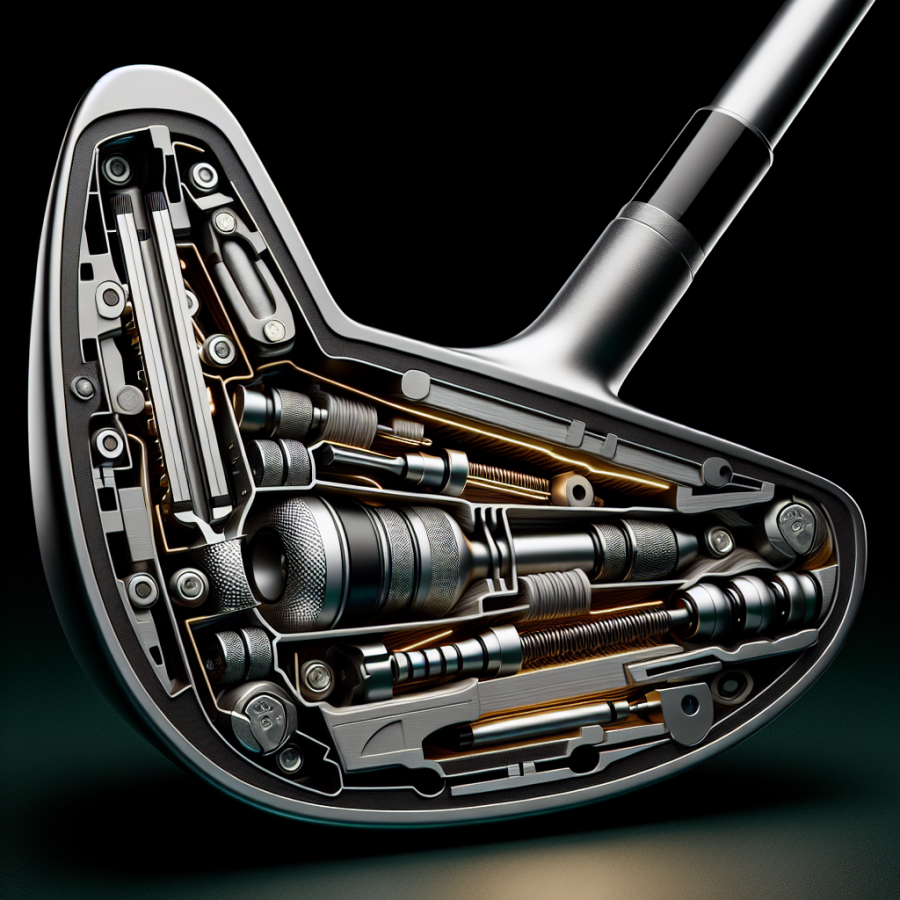Breaking Down the Components: How Different Parts of a Golf Club Affect Performance
The Shaft: The Powerhouse
The shaft acts as the engine that propels the golf ball. Made typically of steel or graphite, the shaft’s flex greatly affects your ball’s trajectory. Too stiff and your shots may spray right (for right-handed golfers); too soft and they may spray left. Also, the flex influences clubhead speed and, consequently, distance. Golfers with powerful, fast swings generally require a stiffer shaft to maintain control, while those with slower swing speeds may benefit from a softer flex.
The Grip: The Connection
Your golf club's grip is your only connection with the club, which makes it a crucial component. Grips made of various materials, such as rubber, cord, and even leather, provide different levels of traction. Its size can also influence your swing; a grip that is too small might encourage excessive hand action, while a grip that is too large can restrict your wrist movement. Regular regripping is vital to ensure consistency in your shots and your comfort while playing.
The Clubhead: The Impact Maker
The clubhead's size, shape, and weight distribution can drastically affect your shots' trajectory, accuracy, and distance. Larger clubheads, popular in drivers, provide a greater surface area for contact, boosting confidence and forgiveness on off-center hits. The center of gravity location within the clubhead also plays a significant role; a lower center of gravity tends to promote higher shots while an advanced one encourages low-launching, more penetrating ball flights.
The Grooves: Spin Masters
The grooves on your golf clubs play a significant role in creating backspin, which makes the ball rise and reduces the impact of side spin, thereby promoting straighter shots. Grooves affect how much spin you get, particularly in a wet environment. A clean contact between ball and clubface helps generate more friction, leading to more backspin, which in turn lifts the ball higher into the call and helps it stop quicker on the green.
The Loft: Trajectory Controller
The angle of the clubface, or loft, highly impacts how high and far the golf ball travels. Clubs with higher lofts, like a pitching wedge, enable the ball to travel high in the air but not as forward. In contrast, clubs with lower lofts, like drivers, offer distance but have a lower trajectory.
The Materials: Performance Enhancers
Golf clubs incorporate various materials, each contributing differently to performance.
Read also:
Teeing Off Amidst Skyscrapers: The Rise of Urban Golf
The Physics of Golf Clubs: Why Design Matters
The physics behind golf clubs is a fascinating blend of engineering, design and materials science. Even though the golfer’s skill is undoubtedly pivotal in the game, the design and build of the club also plays a significant role in every swing, shot, and ultimately, every victory.
Understanding the design concepts and physics of golf clubs can involve a deep dive into concepts such as moment of inertia, center of gravity, aerodynamics and the sweet spot. These concepts influence the design and materials used to construct golf clubs and directly impact how well they perform out on the green.
Firstly, the center of gravity of a golf club is crucial in determining the elevation angle, the launch angle for the ball when it is hit. Manufacturers manipulate the center of gravity primarily by adjusting the distribution of weight in the clubhead. For instance, a lower center of gravity helps achieve higher shot elevation, enabling the ball to travel a greater distance.
Secondly, the moment of inertia plays a significant role in the club's performance. The moment of inertia is essentially the clubhead's resistance to twisting when the ball strikes it off-center, impacting the club’s forgiveness - its ability to still hit a relatively straight shot even when the ball is not hit dead center.
A golf club's aerodynamic properties are also vital in its design. A club with good aerodynamics reduces the drag as the club swings through the air, allowing for faster swing speeds. Manufacturers employ a range of techniques to reduce drag, including clubhead shaping and the incorporation of intricate patterns on the clubhead.
The sweet spot is another essential concept in golf club physics. The sweet spot is the point on the clubface where, if struck by the ball, will result in the greatest transfer of energy to the ball, propelling it further. Club manufacturers often use advanced materials and engineering the shapes of their clubs to increase the size of this sweet spot.
The materials employed in manufacturing golf clubs also play a significant role. Titanium and stainless steel are often used due to their strength, durability, and relatively light weight. The construction materials affect not just the weight, but the entire performance of the club, including factors like distance shots travel, loft, and spin.
Moreover, the shaft of the golf club plays a significant role in how a golf club performs. The flex, torque, and kick point of a golf shaft all affect how the club performs during a swing.




